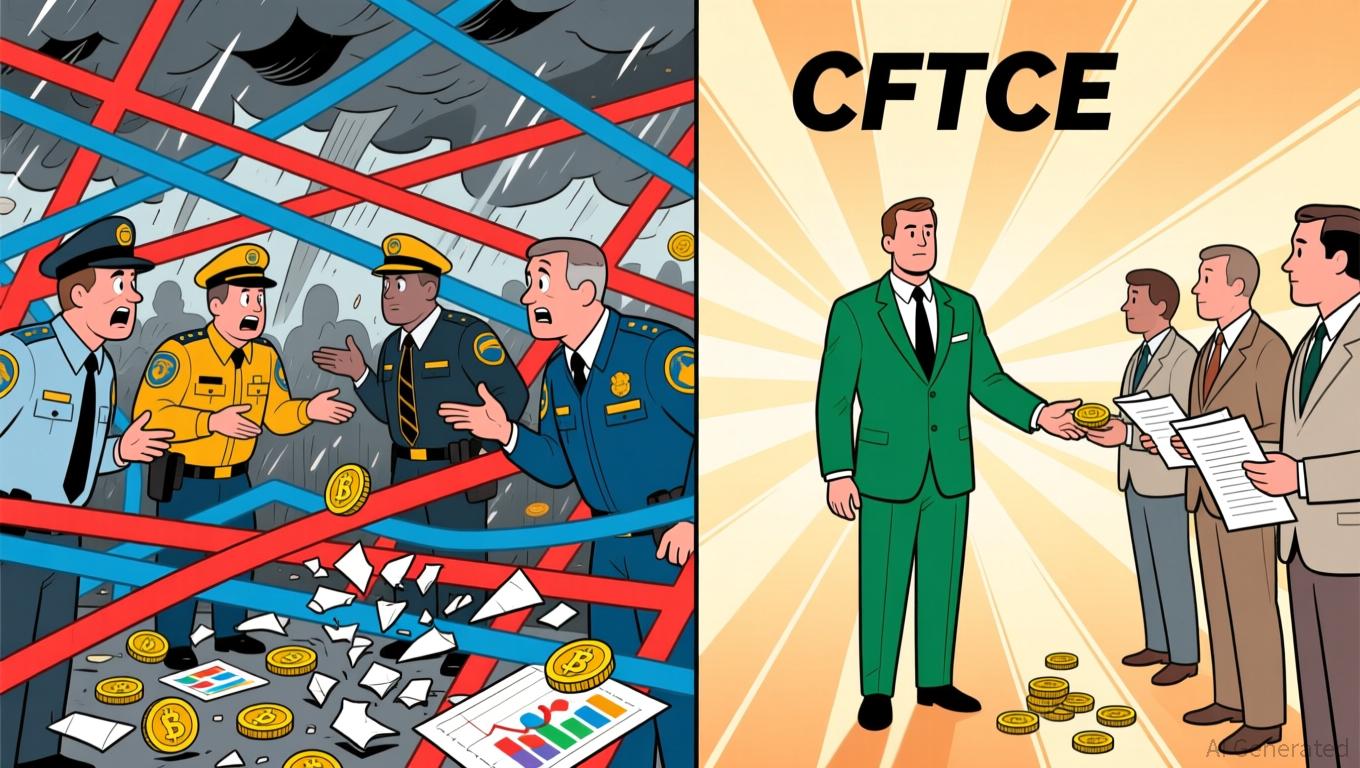Modern Monetary Theory and the Cryptocurrency Dilemma: The Expanding Role of Macroeconomic Policy in Shaping Digital Asset Values
- 2025 crypto markets face tension between MMT's state-led monetary flexibility and crypto's decentralized scarcity, as BIS reports show integration of tokenized reserves with CBDCs. - De-pegging of algorithmic stablecoins (e.g., USDsd) exposed governance flaws, prompting BIS to demand stricter oversight aligned with "three pillars" of sound monetary systems. - CBDCs designed with MMT principles challenge decentralized cryptos by offering state-backed elasticity, potentially marginalizing non-compliant ass
MMT and the Transformation of Monetary Structures
Modern Monetary Theory, which asserts that sovereign nations can issue their own currency without the risk of default and manage inflation through fiscal tools, has gained momentum among central banks addressing post-pandemic economic challenges. This philosophy stands in stark contrast to cryptocurrencies like
The loss of pegs by algorithmic stablecoins like USDsd between 2023 and 2025 revealed weaknesses in decentralized governance, leading regulators to examine whether stablecoins uphold the "three pillars" of a robust monetary system: unity, flexibility, and trustworthiness, as detailed in the BIS report. The BIS has cautioned that many stablecoins fall short of these standards, calling for tighter regulation as tokenized finance grows. For investors, this marks a change in what drives value: digital assets are now increasingly evaluated based on their compliance with regulatory and economic policies, not just speculative interest.

Policy Actions and Market Fluctuations
The Federal Reserve and other central banks have implemented MMT-inspired policies to support economies facing inflation, often through expansive government spending. These measures indirectly influence crypto prices by changing the relative attractiveness of holding digital assets. For example, when governments boost market liquidity, Bitcoin’s reputation as a "store of value" may diminish if interest rates stay low and returns on traditional safe assets drop, as noted in the BIS report. On the other hand, stricter monetary policies—potentially following a Democratic Party victory in the U.S.—could lead to more aggressive regulation of crypto, increasing market volatility, according to the BIS.
One major trend in 2025 is the emergence of central bank digital currencies (CBDCs), which seek to align digital payments with government-backed monetary systems. While CBDCs might lessen the need for private stablecoins, they also create new competition for decentralized cryptocurrencies. The BIS observes that CBDCs are being crafted with MMT concepts in mind, stressing government control over money supply flexibility—a feature missing from Bitcoin’s capped supply, as the BIS report points out. For investors, this means that digital assets not meeting regulatory standards may lose relevance, while those that integrate with CBDC frameworks could gain wider acceptance.
Looking Forward: Implications for Investors
The relationship between MMT and crypto valuations highlights a larger trend: macroeconomic policy has become a central factor in digital asset pricing. Investors now face a market where central bank decisions, regulatory changes, and technological progress are deeply interconnected. For instance, threats from AI-powered malware like UNC1069 have added further unpredictability to crypto prices, making forecasts more complex, as the BIS report observes.
William Mitchell, a prominent MMT expert, suggests that the evolution of money will depend on finding a balance between state intervention and technological advancement, as explored in a
Conclusion
As 2025 progresses, the direction of the cryptocurrency market will be increasingly determined by policies shaped by MMT. Investors need to closely monitor central bank moves, regulatory trends, and the growing influence of CBDCs. While Bitcoin’s ideological foundation remains strong, its future value will largely depend on how well it can adapt to a financial world where monetary policy is dominated by state authority.
Disclaimer: The content of this article solely reflects the author's opinion and does not represent the platform in any capacity. This article is not intended to serve as a reference for making investment decisions.
You may also like
Bitcoin News Update: Trump's Pause on China Tariffs Triggers Worker Protests Over Future of U.S. Shipyards
- Trump administration suspends China tariffs on shipbuilding imports, drawing labor union criticism over domestic industry risks and worker refunds. - 175 H-1B visa abuse investigations reveal $15M+ potential refunds, as unions warn of wage suppression and corporate favoritism in trade policies. - Square enables Bitcoin payments for 4M U.S. merchants, advancing crypto adoption while Trump dismisses inflation concerns and vows meatpacking crackdowns.

Bipartisan Legislation Assigns Crypto Regulation to CFTC to Clarify Oversight Uncertainty
- U.S. lawmakers propose shifting crypto regulation from SEC to CFTC via a bipartisan bill, reclassifying most digital assets as commodities. - The draft aims to resolve regulatory ambiguity stifling innovation, building on stalled House CLARITY Act efforts during the 38-day government shutdown. - Market optimism surged as shutdown relief pushed Bitcoin above $105k, with ETF outflows persisting amid anticipation of clearer CFTC-led oversight. - Critics warn of CFTC resource constraints, while proponents hi

Solana News Update: DevvStream Invests in SOL Despite $11.8M Deficit, Shows Strong Confidence in Sustainable Blockchain Prospects
- DevvStream Corp. (DEVS) disclosed holding 12,185 SOL and 22.229 BTC, staking SOL for 6.29% annualized yield amid a $11.8M fiscal 2025 loss. - The company launched a digital asset treasury via BitGo/FRNT Financial, securing $10M liquidity from a $300M convertible note facility. - Plans include a 2026 tokenization platform for carbon credits and Solana staking, aligning with its de-SPAC/Nasdaq listing strategy. - Despite crypto market outflows, DevvStream's staked SOL attracted inflows, contrasting broader